Effective Phrases To Use When Your Toddler Doesn’t Listen
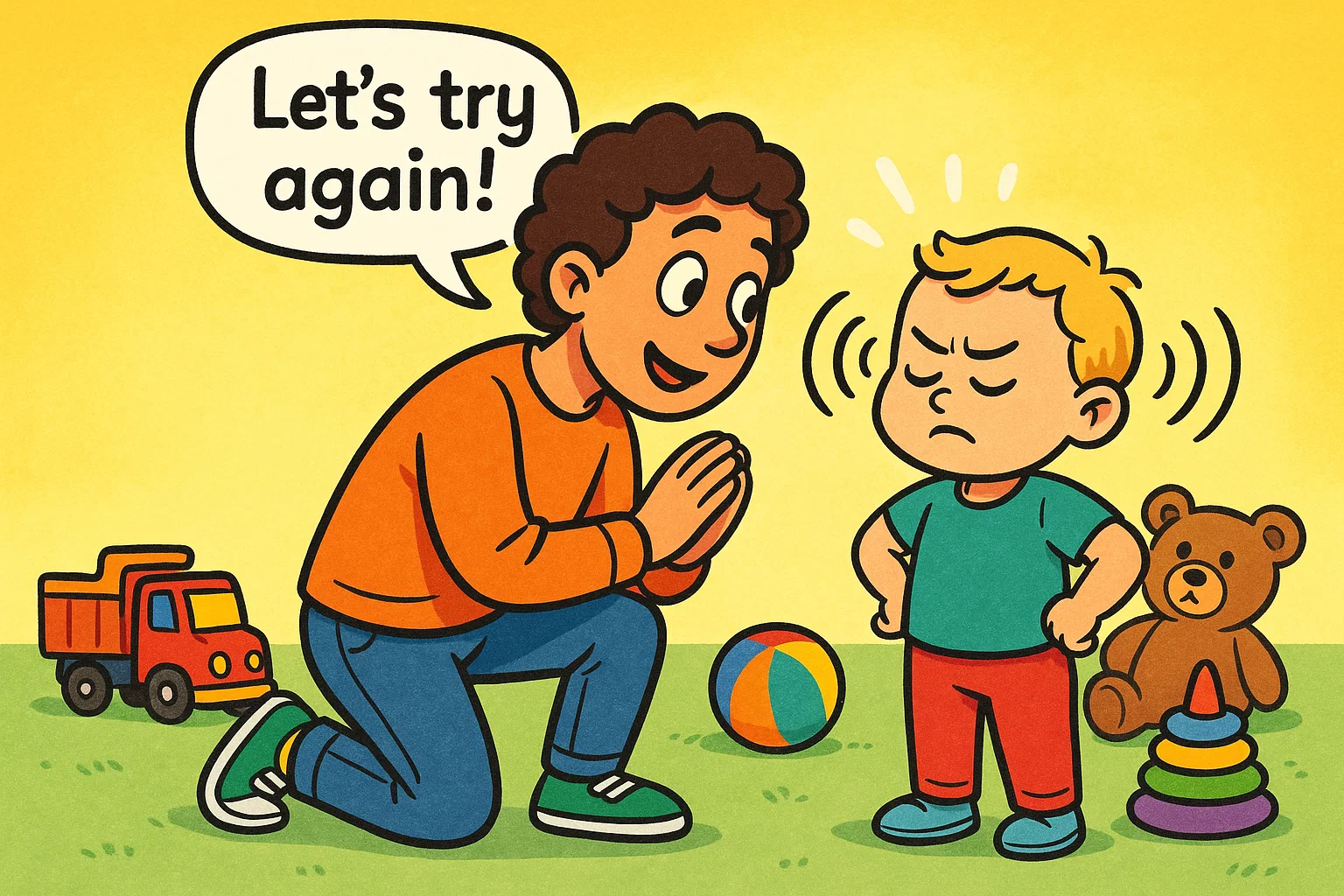
When you’re in the middle of a busy day, and your little one seems to have developed selective hearing, it’s easy to feel frustrated. You’ve asked them to put their shoes on for the tenth time, or you’ve told them not to touch something hot, but your child just isn’t listening. This common parenting challenge can leave you feeling powerless, caught in a cycle of raised voices and emotional exhaustion. But what if there were another way?
This article will empower you with practical, effective phrases to use when your toddler doesn’t listen. We’ll explore the science behind why toddlers don’t listen and provide actionable strategies to help your child develop better listening skills. Instead of resorting to yelling or threats, we’ll focus on positive parenting techniques that build a strong relationship with your toddler and encourage cooperation. By shifting our perspective and our language, we can transform these moments of frustration into opportunities for connection and growth.
Why Toddlers Don’t Listen?
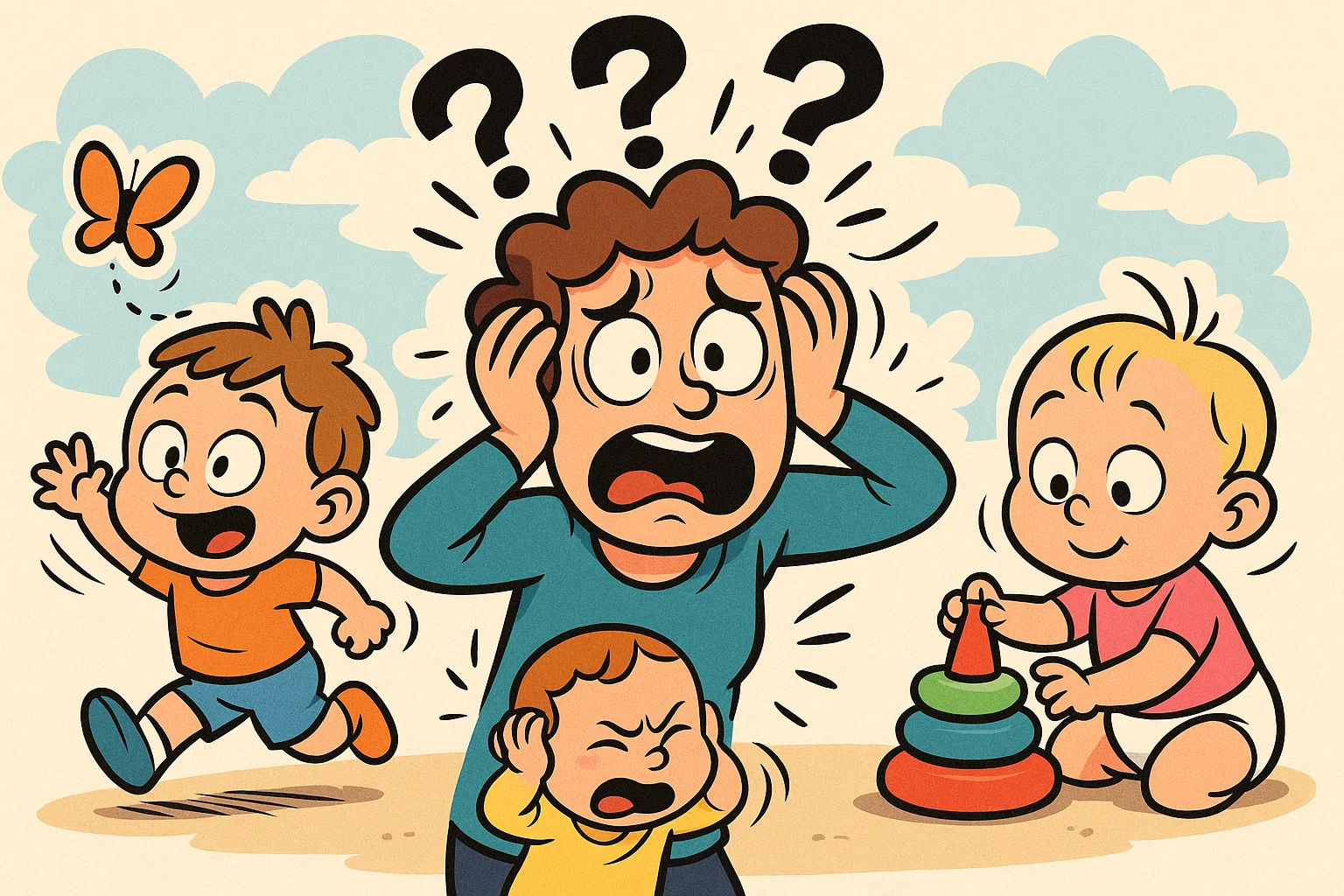
Before we dive into what to say, it’s crucial to understand the reasons why your toddler doesn’t listen. What we perceive as defiance is often a normal part of child development. A toddler’s brain is still developing, and their world is one of constant discovery and powerful emotions they can’t yet regulate. Understanding these underlying factors can help you respond with empathy and patience rather than anger.
Short Attention Span and Curiosity
Toddlers are naturally curious and easily distracted. A child might be fully engrossed in building a block tower or watching a bug crawl by, and your request to “clean up” simply doesn’t register. Their world is full of novel stimuli, and their brains are not yet skilled at filtering out distractions to focus on a single task. This is not a deliberate choice to ignore you; it’s a matter of cognitive development. They’re still learning to manage their attention.
Desire for Independence
From the age of two, toddlers enter a phase of intense exploration and a drive for autonomy. They want to do things “by myself,” and this means testing limits and boundaries. They might refuse to hold your hand in a parking lot or throw a tantrum when you try to buckle them into a car seat. This is not about being a “bad” child; it’s about their burgeoning sense of self. A strong-willed child craves a sense of control over their world. This push for independence is a healthy part of their development, and it’s our job as parents to guide them through it without engaging in a power struggle.
Emotional Overwhelm
A toddler’s emotional world is a rollercoaster. They can go from happy to sad, angry, or overwhelmed in a matter of seconds. Fatigue, hunger, or overstimulation can lead to meltdowns where their emotional regulation skills completely fail. When a child is in the midst of a tantrum, they are not capable of processing or following instructions. Their nervous system is in a state of chaos, and their body’s “fight or flight” response takes over. Trying to force your child to do something during this time will only escalate the situation. Instead, they need your help to co-regulate and feel safe.
Communication Differences
Children, especially toddlers, process language differently from adults. They often hear only the last part of a sentence or miss the nuance of a command. For instance, if you say, “Don’t run in the street,” they may only hear “run in the street.” They also don’t yet grasp abstract concepts or understand the future consequences of their actions. Asking your child to “be careful” might not mean anything to them until you show them what that looks like.
Key Phrases to Use When Your Toddler Doesn’t Listen
The goal is to move from reactive language to proactive, positive phrases that empower your child and encourage cooperation. These are not magic words that will work every time, but they are tools that, with consistency, can transform your interactions.
Set Clear Boundaries with Calm Words
Instead of just saying “stop,” use calm and clear language to state the boundary and a desired alternative. This helps your child understand what they should be doing instead of just what they shouldn’t.
- Instead of: “Stop throwing your food!”
- Try: “We eat food at the table.” or “Food stays on the plate.“
- Instead of: “Don’t hit your brother!”
- Try: “Our hands are for gentle touches.” or “We use kind hands with our friends and family.“
Give Simple Choices
Offering choices gives your child a sense of control and independence, which can prevent a power struggle. Limiting the options to two simple choices makes it easier for them to decide.
- Instead of: “Put your shoes on now.”
- Try: “Would you like to wear your blue shoes or your red shoes?“
- Instead of: “You need to get in the bath.”
- Try: “Do you want to get in the bath now, or in two minutes?” (Use a timer for this)
This strategy works because the child feels like their choice matters, even though the ultimate outcome is the same. It fulfills their need for autonomy while keeping you in control of the situation.
Explain the Reason
Toddlers are more likely to listen and follow instructions if they understand the “why” behind your request. Simple, age-appropriate explanations help them connect their actions to outcomes.
- Instead of: “Don’t touch that.”
- Try: “Please don’t touch that. It’s hot, and it will hurt your fingers.“
- Instead of: “Be quiet!”
- Try: “We need to use our quiet voices inside so we don’t wake up the baby.“
Prepare Your Toddler for Transitions
Transitions from one activity to the next can be a major source of tantrums. Giving your child a heads-up helps them mentally prepare and reduces resistance.
- Instead of: “We’re leaving now!”
- Try: “In five minutes, we’re going to leave the park. Let’s go down the slide two more times.“
- Instead of: “It’s time for bed.”
- Try: “The sun is going down, and it’s almost time for bed. Let’s finish building your tower, and then we’ll go get ready.“
Using a countdown or visual cues like a timer can be very helpful for this.
Use Positive “When/Then” Statements
This technique, also known as positive reinforcement, frames a task as a prerequisite for a desired activity. It gives your child a clear path to get what they want.
- Instead of: “You can’t have a snack until you clean up your toys.”
- Try: “When your toys are cleaned up, then we can have a snack.“
- Instead of: “No screen time until you finish your homework.”
- Try: “When you finish your homework, then we can have some screen time.“
This approach focuses on the positive outcome and avoids making the child feel like their freedom is being restricted.
Redirect Attention
When a toddler is focused on something you don’t want them to do, a direct command to stop might not work. Instead, redirect their attention toward an acceptable activity.
- Instead of: “Stop splashing so much water on the floor!”
- Try: “Wow, look at all the bubbles we can make! Can you make the water a funny color with this soap?“
- Instead of: “Don’t climb on the couch!”
- Try: “The couch is for sitting. Let’s go outside and climb on the jungle gym!“
This is a great tool for helping a child to do something productive and positive instead of engaging in a negative behavior.
Encourage Problem-Solving
Help your child develop problem-solving skills by letting them find their own solutions with your support. This empowers them and builds confidence.
- Instead of: “Let me do it for you.”
- Try: “I see you’re having trouble with your coat zipper. Would you like help, or do you want to try it yourself one more time?“
- Instead of: “Why did you do that?”
- Try: “It looks like the blocks fell down. What do you think we can do to make the tower stronger next time?“
This approach helps a child learn from their mistakes without shame or frustration. It shows them that you believe in their ability to figure things out.
Show Empathy in Your Words
Acknowledging your child’s feelings, even if you can’t agree with their behavior, makes them feel heard and understood. This can de-escalate a situation quickly.
- Instead of: “It’s not a big deal. We have to go.”
- Try: “I know you’re having fun and it’s hard to leave the playground, but it’s bedtime. We can come back tomorrow!“
- Instead of: “Stop crying!”
- Try: “I can see you’re feeling really frustrated that you can’t have more cookies. It’s okay to be sad, but we can have one more after dinner.“
This builds emotional intelligence and strengthens your relationship with your toddler.
Use Humor and Playfulness
Sometimes the best way to get kids to listen is to make it a game. Lightening the mood can turn a difficult moment into a fun one.
- Instead of: “Put your toys away now.”
- Try: “Let’s see if we can get all the toys to ‘swim’ into their toy bin before the timer goes off!”
- Instead of: “It’s time to brush your teeth.”
- Try: “Let’s see if we can brush away all the sugar bugs! Can you find the sugar bugs hiding in the back of your mouth?”
Use “I” Statements
When your child’s actions affect you, use “I” statements to express your feelings without placing blame. This teaches them about personal responsibility and empathy.
- Instead of: “You always run away from me at the park.”
- Try: “I feel worried when you run away from me at the park because I want to make sure you’re safe.“
- Instead of: “You made a huge mess!”
- Try: “I feel frustrated when there are toys on the floor because I’m worried someone might trip.“
This encourages your child to listen and think about the impact of their actions on others.
Strategies to Ensure These Phrases Work
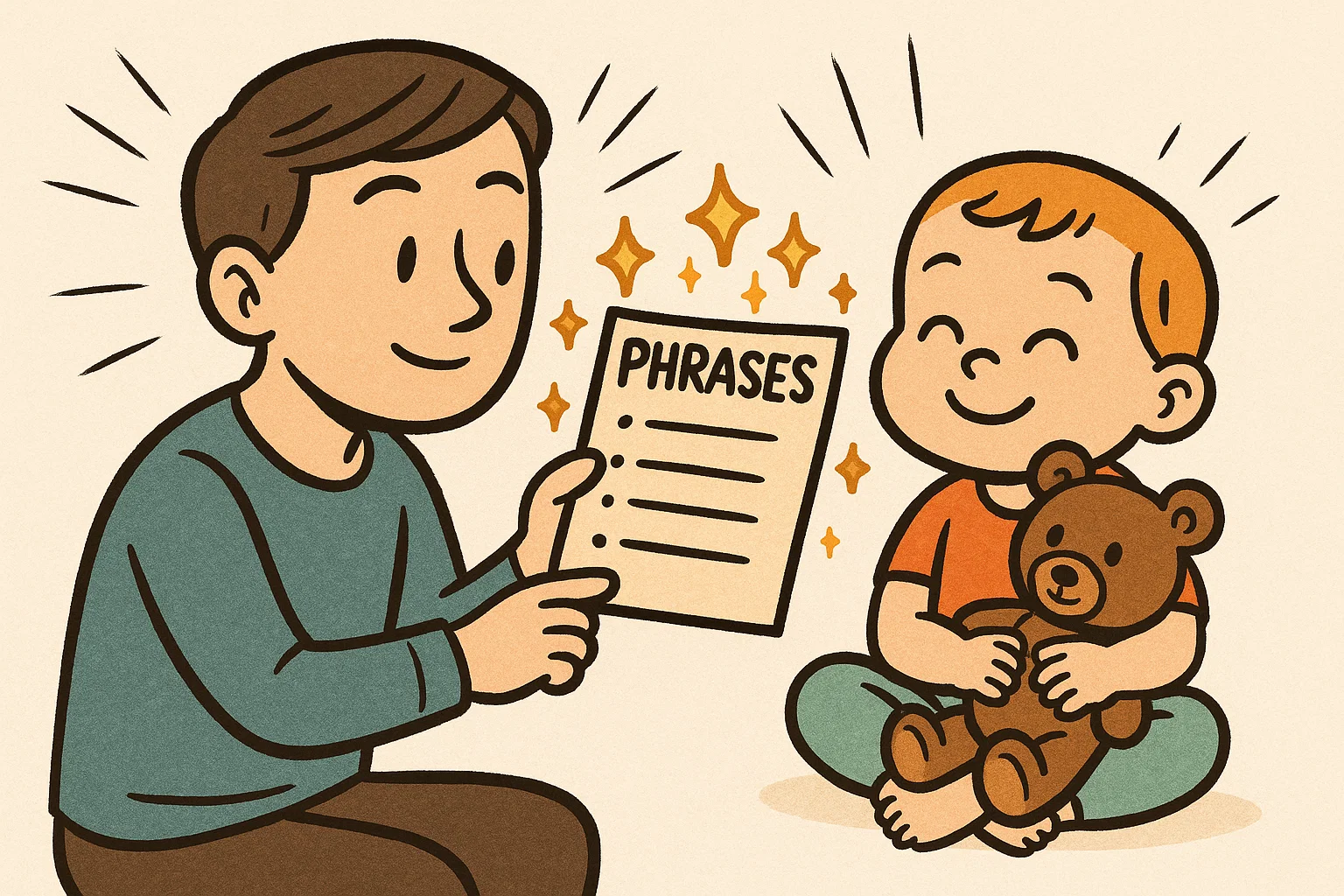
Saying the right words is only half the battle. How you say them and what you do after is just as important. These strategies help create an environment where your child is likely to listen.
Be Consistent with Routines and Limits
Toddlers thrive on predictability. When routines and limits are consistent, they know what to expect. This reduces anxiety and the need for them to test boundaries constantly.
- Create a visual routine chart: For older kids, a chart with pictures showing the steps for bedtime or getting ready in the morning can be a powerful tool.
- Stick to your word: If you say, “We’re leaving in five minutes,” you must leave in five minutes, even if it results in a tantrum. This builds trust and shows your child you mean what you say.
Model Good Listening Skills Yourself
Children are always watching us. To help children develop listening skills, we must model good listening. When your child talks to you, give them your full attention. Get down to their eye level and make eye contact. This shows them that what they say is important and teaches them how to be a good listener.
Stay Calm and Regulate Your Own Emotions
It can be incredibly difficult to stay calm when your child isn’t listening, but your tone of voice and body language are powerful tools. When you feel yourself getting frustrated, take a deep breath. Your calm presence can help your child regulate their own emotions. Research supports that calm, authoritative parenting—a blend of warmth, clear boundaries, and respect—is far more effective than yelling. Studies show that children raised with authoritative parenting tend to develop better emotional regulation, social skills and academic performance, and are less likely to experience anxiety or depression. In contrast, evidence shows that frequent yelling can have effects comparable to physical punishment, increasing stress, anxiety, and behavioral issues in children.
Reinforce Cooperation with Praise
When your child listens and follows instructions, acknowledge their efforts. Positive reinforcement is a powerful motivator for good behavior.
- Instead of: “Finally! You put your shoes on.”
- Try: “Thank you for putting on your shoes so quickly! That was a big help.“
- Instead of: (Nothing)
- Try: “I noticed how you helped clean up all the blocks. That was so responsible!“
This helps your child connect their actions to a positive outcome and feel a sense of pride.
Phrases and Responses to Avoid
Just as important as knowing what to say is knowing what not to say. Certain phrases can inadvertently damage your relationship and escalate a situation.
Avoid Yelling or Threats
Yelling might get a child’s attention in the short term, but it often works by creating fear. Over time, it damages the parent-child relationship and can cause a child to become desensitized to your voice. Similarly, threats like “I’m leaving without you!” or “If you don’t do this, you’re not getting a toy ever again!” don’t teach a child to cooperate; they teach a child to obey out of fear. This can also backfire, as a child might call your bluff.
Don’t Dismiss Feelings with “Because I Said So”
This phrase shuts down communication and tells your child that their feelings and thoughts don’t matter. It offers no explanation and can breed resentment. Instead, try to understand their perspective and offer a simple, clear reason for your request.
Avoid Overly Complex Language
Toddlers are still learning to process language. Using long, complex sentences or abstract concepts can be confusing and overwhelming for them. Keep your instructions simple, direct, and concise. Keep your language simple and age-appropriate.
- Instead of: “I need you to cease all unnecessary movement and direct your attention to the task at hand.”
- Try: “Please sit still and look at the book.“
| Instead of This… | Try This… |
| “Stop being so messy.” | “Let’s put the toys in the box.” |
| “Don’t touch that!” | “That is not for touching. It’s fragile.” |
| “Hurry up!” | “Let’s move our bodies like speedy turtles.” |
| “You’re acting like a baby.” | “It looks like you’re having a hard time. Let’s take a deep breath together.” |
Handling Power Struggles When Your Toddler Ignores You
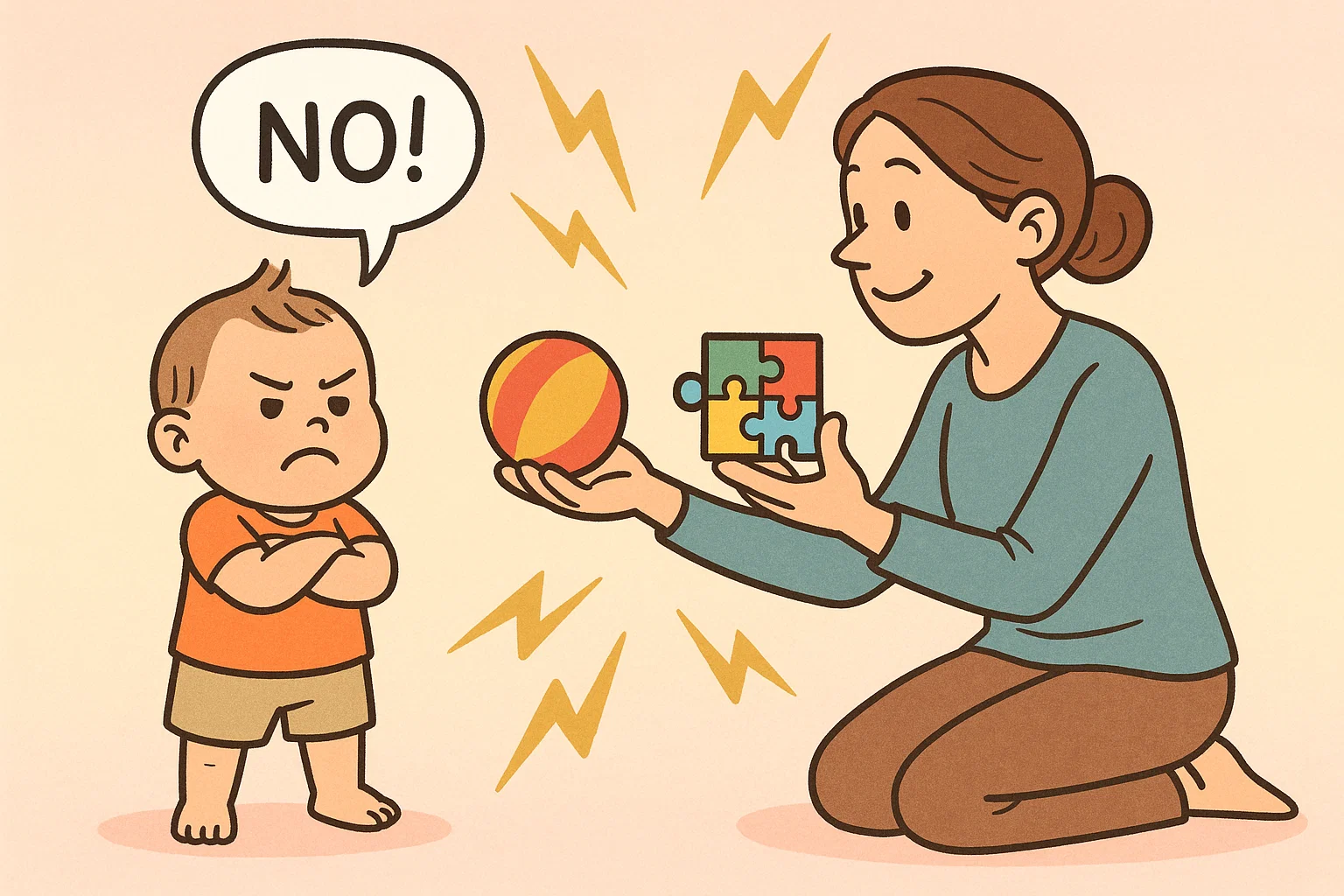
Sometimes, no matter what you say, your child doesn’t want to cooperate. They might just stand there, defiant, or they might completely ignore you. This is where a power struggle begins. Here are some ways to navigate these challenging moments.
Foster Connection Before Correction
When a child is feeling disconnected, their listening ears often shut off. Before you try to correct their behavior, connect with them. Get down on their level, give them a hug, or offer a moment of play. A child is more likely to listen and follow instructions when they feel safe and loved.
Recognize When to Give Space
In some cases, a child needs a moment to regulate their emotions on their own. If your child is in a meltdown, trying to force them to listen will only make things worse. Give them a safe space to be angry or sad. Once they’ve calmed down, you can talk about the situation.
Teach Consequences Calmly
Discipline should be about teaching, not punishing. When a child breaks a rule, a natural consequence can be a powerful learning tool.
- If they throw a toy, the consequence might be that they don’t get to play with that toy for a little while.
- If they spill a drink, the consequence is helping to clean it up.
Explain the consequence clearly and calmly: “Because the toy was thrown, we need to put it away for a bit to keep it safe.”
Should You Discipline a Toddler Who Doesn’t Listen?
The word “discipline” often has a negative connotation, but its root means “to teach.” Gentle discipline is about setting clear, loving boundaries and helping a child learn to navigate their world. It’s not about punishment or control.
Natural Consequences
As discussed earlier, natural consequences are often more effective than punishment because they are directly related to the child’s actions. They help children understand cause and effect.
- Action: The child refuses to wear a jacket.
- Natural Consequence: They feel cold outside.
- Learning: “I need to wear a jacket to stay warm.”
Setting Realistic Expectations
It’s important to remember that toddlers are still learning. Their brain’s prefrontal cortex, which is responsible for impulse control and decision-making, is not fully developed. Expecting a two-year-old to have the self-control of an older child or an adult is unrealistic and sets everyone up for failure. Understand that a toddler’s brain is still developing, and they are learning.
Combining Firmness with Empathy
The most effective parenting style is often a combination of being firm with boundaries while also being empathetic to your child’s feelings. You can say, “I understand you’re upset, but we still need to hold hands when we cross the street to stay safe.” This approach shows you respect their feelings while also holding the boundary.
When to Seek Extra Support
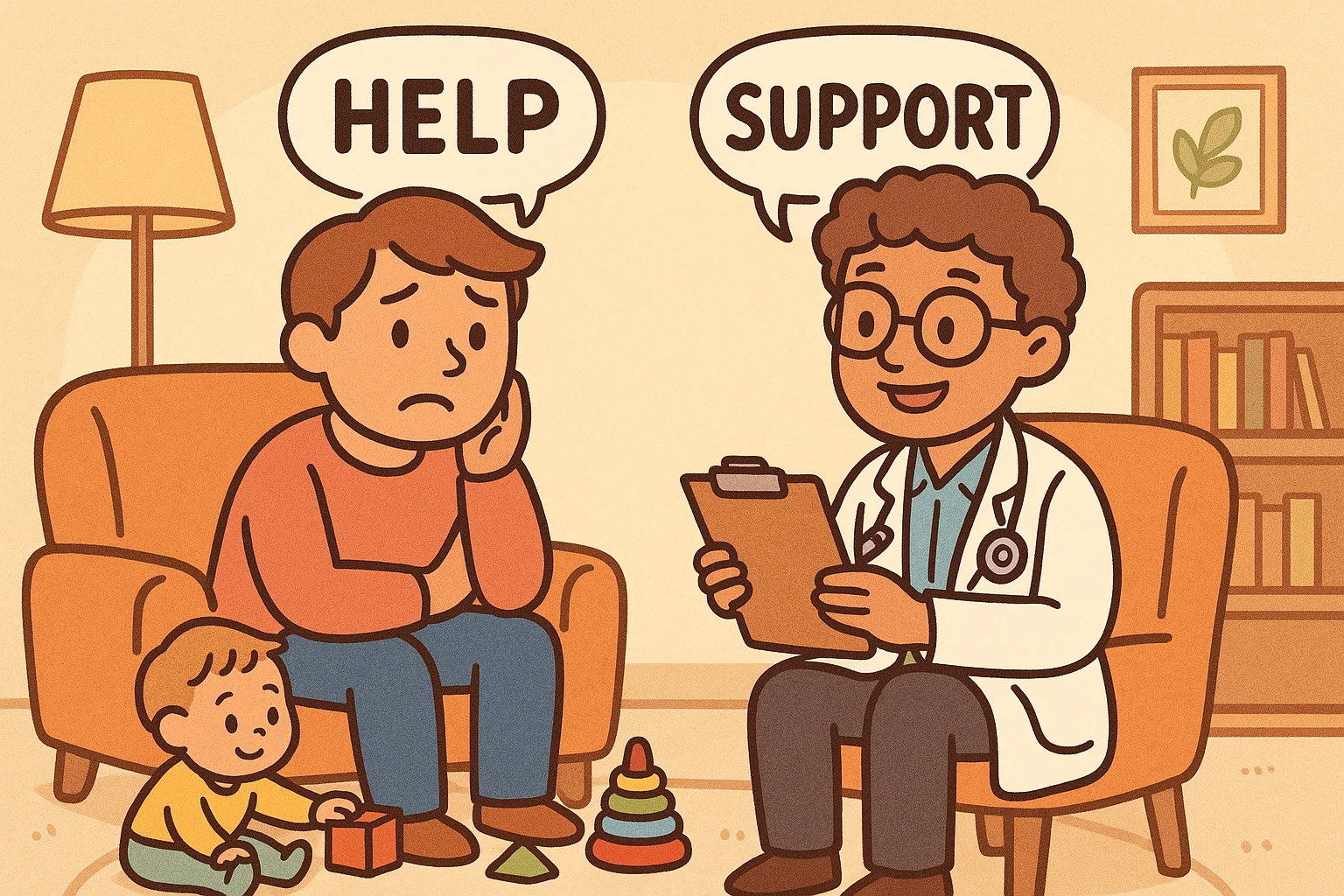
While most listening challenges are normal parts of development, there are times when it might be helpful to seek professional support.
Frequent Meltdowns or Aggression
If your child’s behavior is consistently aggressive or they have very frequent, intense meltdowns, it might be a sign of a larger issue with emotional regulation. A pediatrician or a child development specialist can help you determine if there’s a need for further evaluation.
Possible Speech or Hearing Issues
A child who isn’t listening might be struggling to hear or process what you’re saying. If you have concerns, it’s always a good idea to have your child’s hearing checked. A speech therapist can also help if you suspect your child is having trouble with language processing.
Parental Support Resources
Parenting is hard, and you don’t have to do it alone. There are many resources available to help you navigate these challenges. Parenting classes, therapy, or even online support groups can provide you with the tools and encouragement you need. Your well-being as a parent is just as important as your child’s.
Final Notes and Encouragement
Parenting a toddler is a marathon, not a sprint. The journey of teaching your child to listen is a long one, and it’s filled with ups and downs. The phrases and strategies in this article are a starting point, but the most important thing is your commitment to consistency and patience.
Progress Takes Consistency and Patience
Don’t expect a perfect outcome overnight. There will be days when you feel like you’re making no progress, and that’s okay. Each time you use a positive phrase instead of a harsh one, you are building a stronger foundation for a healthy parent-child relationship.
Building Emotional Intelligence from Early Years
The way we communicate with our toddlers teaches them about empathy, respect, and emotional intelligence. When you respond with calm and understanding, you are teaching your child how to regulate their own emotions. The listening skills they develop now will serve as the foundation for their future relationships and success. Remember, you are not only teaching your child to listen and follow instructions—you are also helping them feel safe, understood, and loved. This builds their intrinsic motivation to be a good person and a good listener for years to come.
